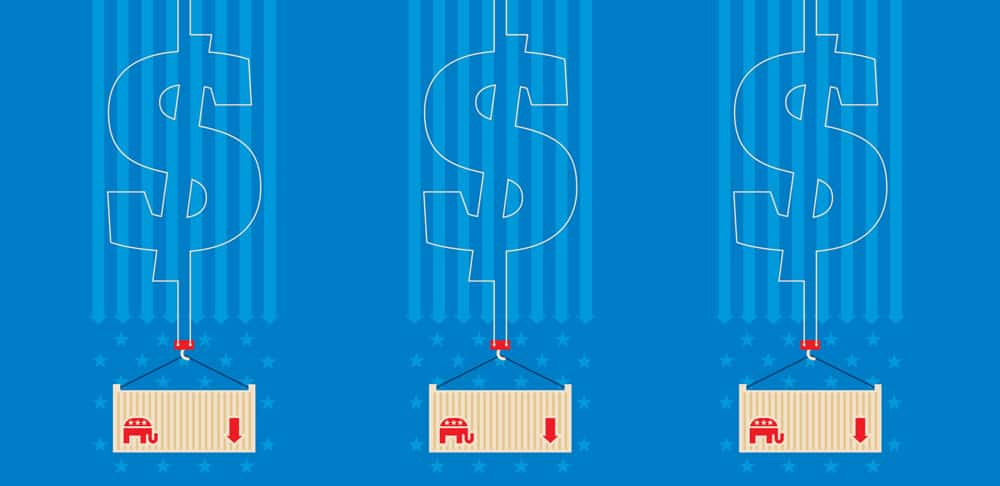Thanks to fearmongering on the US presidential campaign trail, the trade debate and its impact on American workers is being distorted at both ends of the political spectrum, writes Stephen Roach.
From China-bashing on the right to the backlash against the Trans-Pacific Partnership (TPP) on the left, politicians of both parties have mischaracterised foreign trade as America’s greatest economic threat.
In 2015, the United States had trade deficits with 101 countries – a multilateral trade deficit, in the jargon of economics. But this cannot be pinned on one or two “bad actors,” as politicians put it. Yes, China – everyone’s favorite scapegoat – accounts for the biggest portion of this imbalance. But the combined deficits of the other 100 countries are even larger. What the candidates won’t tell people is that the trade deficit and the pressures it places on hard-pressed middle-class workers stem from problems made at home. In fact, the real reason the US has such a massive multilateral trade deficit is that Americans don’t save.
Total US saving – the sum total of the saving of families, businesses and government – amounted to just 2.6% of national income in the fourth quarter of 2015. That is a 0.6% drop from a year earlier and less than half the 6.3% average that prevailed during the final three decades of the 20th century. Any basic economics course stresses the ironclad accounting identity that saving must equal investment at each and every point in time. Without saving, investing in the future is all but impossible. And yet that’s the position in which the US currently finds itself.
So why is this relevant? In order to keep growing, the US must import surplus saving from abroad. As the world’s greatest economic power and issuer of what is essentially the global reserve currency, America has had no trouble – at least not yet – attracting the foreign capital it needs to compensate for a shortfall of domestic saving.
But there is a critical twist: to import foreign saving, the US must run a massive international balance-of-payments deficit. The mirror image of America’s saving shortfall is its current-account deficit, which has averaged 2.6% of GDP since 1980.
It is this chronic current-account gap that drives the multilateral trade deficit with 101 countries. To borrow from abroad, America must give its trading partners something in return for their capital: US demand for products made overseas. Therein lies the catch to the politicisation of America’s trade problems.
Closing down trade with China, as Donald Trump would effectively do with his proposed 45% tariff on Chinese products sold in the US, would backfire. Without fixing the saving problem, the Chinese share of America’s multilateral trade imbalance would simply be redistributed to other countries – most likely to higher-cost producers.

Stephen Roach
I have estimated that Chinese labour compensation rates remain far less than half of those prevailing in America’s other top-ten foreign suppliers. If those countries were to fill the void left by a penalty on China, higher-cost producers would undoubtedly charge more than China for products sold in the US.
Closing down trade with China, as Donald Trump would effectively do … would backfire
The resulting increase in import prices would be an effective tax hike on the American middle class. That underscores the futility of attempting to find a bilateral solution for a multilateral problem. The same perverse outcome could be expected from the reckless fiscal policies proposed by other politicians.
DEEPER PROBLEMS
Government budget deficits have long accounted for the largest share of America’s seemingly chronic saving shortfall. The added deficits of Sandersnomics, or those of any other politician, would further depress America’s national saving – exacerbating the multilateral trade imbalance that puts such acute pressure on middle-class families.
Seen through the same lens, mega trade deals, such as the TPP, would also have an important bearing on pressures that squeeze American workers. The TPP would effectively divert trade flows from those countries that are not a part of the agreement to those that are. With China excluded from the TPP, the same phenomenon noted above would result.
America’s 101 trade deficits don’t exist in a vacuum. They are a symptom of a deeper problem: a US economy that has lived beyond its means for decades. Saving is but a means to an end – in this case the sustenance of a thriving and secure middle class. Without saving, the American Dream is in danger of becoming a nightmare. The trade debate of the current presidential campaign heightens that risk.
About the author: Stephen Roach is a faculty member at Yale University and former chairman of Morgan Stanley Asia. He is the author of Unbalanced: The Codependency of America and China.







